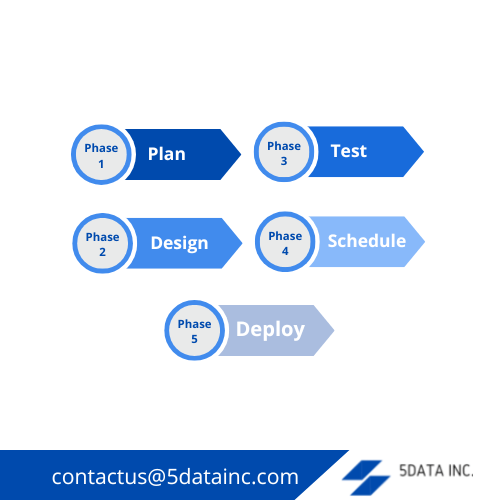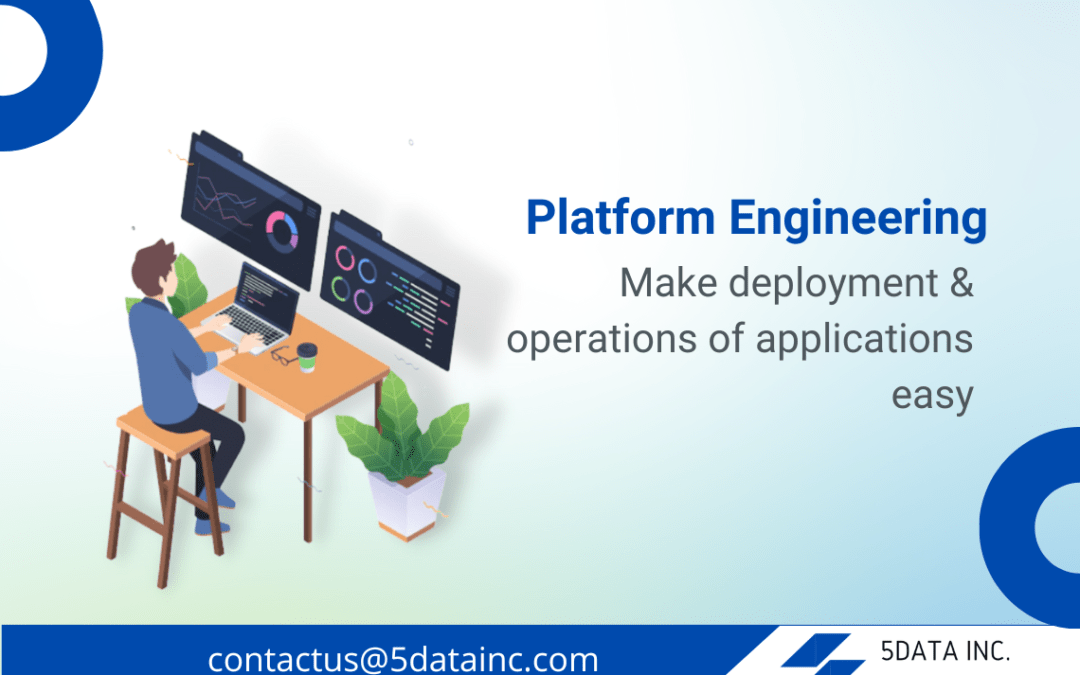Introduction
In today’s digital upheaval, Businesses are always looking for new ways to advance in technology.
Also, to remain consistent in the booming market, it is helpful to have a streamlined process for deploying and running apps in production.
It allows development teams to provide new features to customers more quickly and efficiently.
Therefore, many businesses have understood that having a dedicated expert team that constructs and maintains a shared platform and is always searching for new ways to improve the deployment and operation of apps is essential to achieve this goal.
Alternatively, the standardized practice of curating a common platform is called “Platform Engineering.”
What Is Platform Engineering And Its Relevance
In a formal context,
“Platform Engineering is the process of developing and maintaining a shared platform as a product for technical teams. It minimizes time-to-market and ambiguity by offering self-service deployments for infrastructure and apps, as well as facilitating the operation of workflows.”
However, the application development and other technology teams are still in charge of building, deploying, and operating their apps.
Still, they use the platform in a self-service mode to streamline their process.
So, what is the role of Platform Engineers?
Platform Engineers could also be called “developer enablers” or “integration teams.”
They develop and manage tools and practices that enable engineers to push code to production promptly and efficiently.
Platform engineering teams also act as an abstraction layer between engineers and IT infrastructure.
It enables developers to skip the infrastructure’s intricacies and focus on designing and releasing vital features.
In practice, platform engineers deploy automation through APIs or web portals to make their knowledge and skills available to the business.
Let us understand how the deployment model is integrated into our application.
Deployment Model Process – Explained
In the field of Software Engineering, we test real-world applications in a test environment before releasing them.
Hence, Application Deployment refers to various methods and processes used to make system software available to consumers.
In web development, though, it can signify something quite different!
Visitors are not notified when their favorite website is updated. The developers update their modifications to a server, making the changes instantaneously available to all website visitors.
However, at its foundation, application deployment is just the delivery of finished software to the customer who requested it or to customers currently using it.
The applications are not deployed until it has been extensively tested; it is one of the final steps of the development process.
The deployment process guarantees that the code contains no weaknesses or problems; if any pain points are foundduring the testing phase, they are addressed before the application is released.
The Deployment Model
- It generally consists of four phases which are mentioned below;
- Production Environment: The production environment allows you to deploy your changes and provide services to your user base.Most production settings operate 24 hours a day, seven days a week, support several concurrent users, and handle a huge volume of transactions and requests.
- Development Environment: A development environment helps to evaluate application features and adjust your installation before deployment in a production environment.
- Test Environment: A test environment is a configuration that clones your production environment and allows you to test performance, upgrades, and backup and securely restore methods.
- Reporting Environment: A reporting environment is a setup that replicates the data in your production environment and is used to generate and analyze reports.
The Deployment Process
-
A software deployment process comprises the stages and procedures necessary to deploy and maintain software applications.
- Plan
- Design
- Test
- Schedule
- Deploy
There are five stages of the Application Deployment process:
Plan
-
Planning is theinitial stepin deploying software.
Specifically,
What program or app are you hoping to roll out?
How many users do you have?
Which constraints are we talking about here?
While developing your application deployment strategy keep these questions in mind, among many others.
Design
Designing the software deployment strategy after deciding the best method to take.
Which deployment strategy will best protect your company’s information and operations?
Is immediate availability of the new software required, or is a phased rollout acceptable?
All the above objectives can be met using one of the above deployment strategies.
Test
Several potential issues might arise while introducing any new piece of software.
Having a test environment can help you avoid setbacks in your production environment.
Create simulations close to or identical to how your company operates.
Schedule
The next step is to establish a timeline for when each of these activities should be accomplished, either manually or with the help of a piece of automated software.
Keeping to a timetable and delegating responsibilities to simplify software deployment and reduce the likelihood of issues.
Deploy
The last step is installing the software on your end-user devices.
Assuming you’ve followed these instructions carefully, distributing the software or fixes should go off without a hitch.

Types Of Cloud Deployment Models
The cloud deployment model describes the types of cloud environments based on ownership, scale, and access, as well as the nature and function of the cloud.
A cloud deployment paradigm outlines where and who is in charge of your servers.
It details your cloud’s architecture, what you can modify, and whether you’ll be provided with predefined services or left to roll your own.
Additionally, cloud deployment types specify the nature of your infrastructure’s connection to its end users.
Generally, different deployment models for cloud computing include:
- Public cloud
- Private cloud
- Hybrid cloud
Benefits Of Application Deployment
Application deployment simplifies the tasks needed to ensure users have access to software and that it works effectively.
Therefore, application deployment has many benefits, such as:
-
Short And Efficient Execution Cycles
An organization’s productivity is enhanced through deployment automation.
Automated software deployments are conducted in milliseconds, and validation can be performed without human intervention, reducing deployment from a manual half-day operation to a task that requires no thought.
-
Less Prone To Errors
Automated deployments are significantly less prone to flaws than manual deployments.
Manual deployments take numerous processes and are susceptible to human error.
Essential procedures in a software release may be omitted inadvertently, issues during a release may go undetected, the wrong versions of software may be released, or software with broken ends may go live.
-
Quick Feedbacks
Since automated deployments are more reliable and can be released more frequently, you can collect feedback more quickly, sometimes in real-time.
Your company may increase performance and productivity by listening to customer feedback and incorporating it into future releases. This input is crucial as it can determine whether or not a product succeeds in satisfying its intended market.
Conclusion
So far, we have learned that platform engineering is a novel concept regarding ideas in contemporary software development.
Now you know that platform engineers are a buffer between developers and the underlying system.
Using infrastructure as code and other methods, platform engineers ease the coding burden and let software developers release their work more rapidly than ever before.
Confused about where to start?!
Look no further!
5DataInc has your back.
Since the business strives on data, it’s important to give the organizations insights that help them make decisions based on the data.
At 5datainc, we gather, scrutinize, transform, and tabulate your data. Our analytics experts give you a deeper understanding of your data and help you make decisions for your business that will help it succeed tremendously in the future.
Contact us today.

